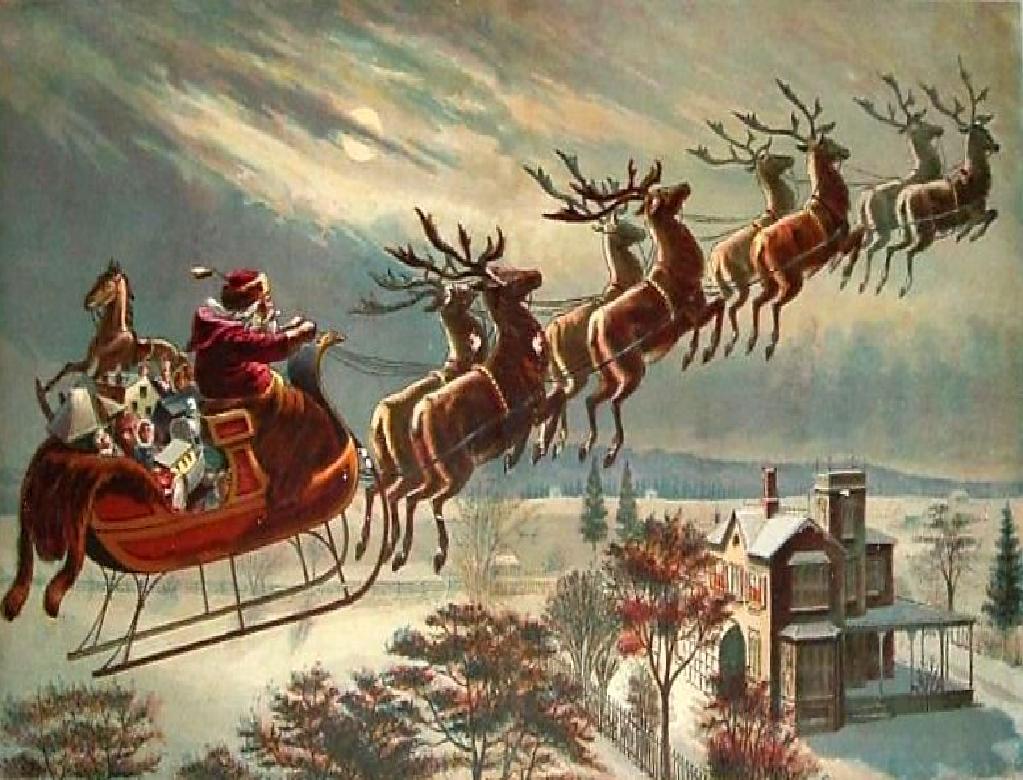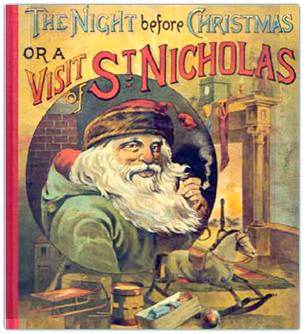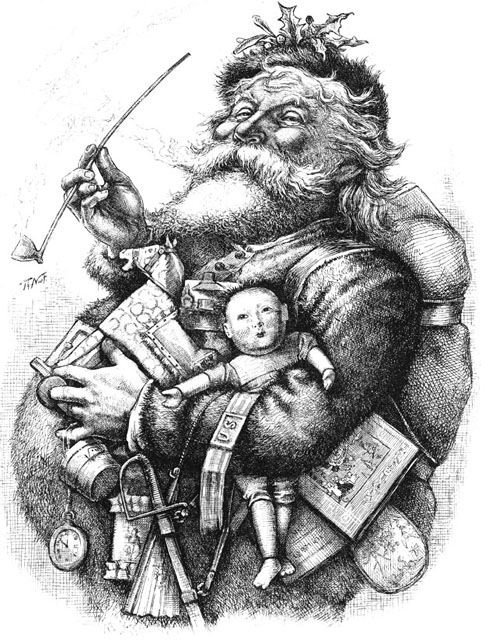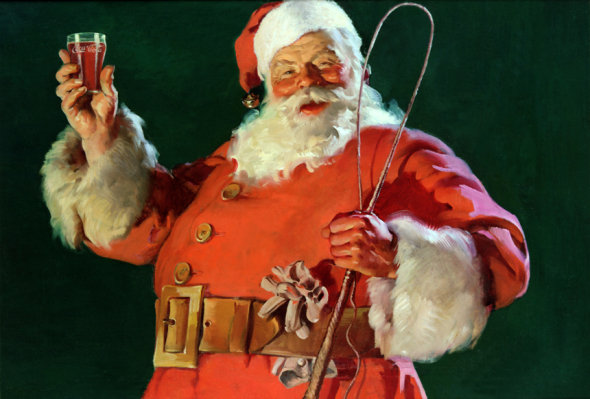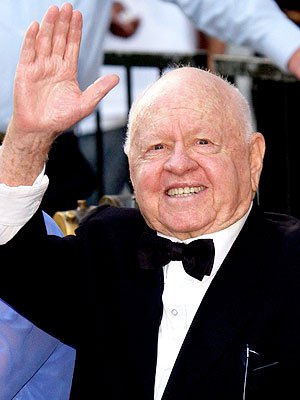Yes, Virginia, There Is a Santa Asteroid!
The astrology of Santa Claus? (Now that would be a great chart to have!) Not exactly, but there’s an asteroid namesake of the jolly old elf himself, just as spritely and mysterious as the original.
Discovered 26 August 1933 by Eugene Delporte at the Belgian Royal Observatory in Uccle, Santa is just one of 66 asteroids to this famed astronomer’s credit (Delporte later had a lunar crater named in his honor in recognition of his contributions). This chunk of cosmic debris was actually named by the Italian who computed its orbit, and is not intended as the celestial namesake of jolly old St. Nicholas, but rather the generic feminine form of “Saint” in Italian, also meaning “holy, sacred, or blessed.” However, like so many of its fellows, asteroid Santa has an alternate usage, and in this case a decidedly Kris Kringle bent, appearing prominently in the charts of individuals who have been instrumental in developing or disseminating the Santa Claus mythos, or whose careers have included substantial ho-ho-ho-ing.
As with so many things Americana, Santa’s tale owes at least a part of its origins to iconic post-Revolutionary author Washington Irving, the premiere US writer of his day. Irvings’ satirical 1809 lampoon “A History of New-York from the Beginning of the World to the End of the Dutch Dynasty,” written under the pen-name of Diedrich Knickerbocker, was a fanciful re-telling of the settling of New York (formerly New Amsterdam) with appropriate literary skewers to the pretensions and foibles of contemporary politicians and socialites. And within it appears the first popular mention of the old Dutch folk figure Sinterklaas, Americanized by Irving as “Santa Claus.”
Irving’s Santa is modeled on a rotund Dutch sailor in baggy breeches and a broad-brimmed hat, smoking a long-stemmed clay pipe and driving a horse-drawn wagon above the treetops, from where he would drop gifts down the chimneys of those who pleased him. Irving also gave us the expression, “laying his finger beside his nose,” although since his Santa didn’t navigate chimneys himself, this had less to do with levitation than self-identification, as this obscure gesture was purported by Irving to be the sign of Saint Nicholas.
In Irving’s (born 3 April 1783) nativity, asteroid Santa appears at 24 Gemini, squared natal Mercury at 17 Pisces and quintile the Sun at 13 Aries, very apt for the writer (Mercury) who gave Santa Claus (asteroid Santa) his first truly American self-identity (Sun). Asteroid Santa is also broadly conjunct natal Uranus at 3 Cancer, stressing the essential alien-ness of Irving’s creation (as well as his gift of flight).
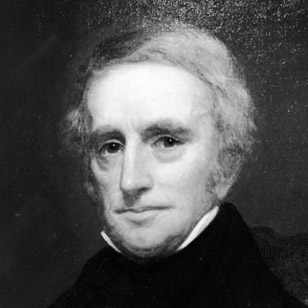
Clement Clarke Moore, who popularized Santa’s flying sleigh, his rather unconventional means of access to homes, and even gave us the reindeer’s names.
Irving’s Santa was pivotal to the jolly elf’s American cultural debut, but his inclusion in “A History of New York” was just a footnote in a much larger work. It took Clement Clarke Moore, a professor of Biblical Learning at New York’s General Theological Seminary, to give Santa Claus star billing, albeit he reverted to his former ecclesiastically-named roots as St. Nicholas. Moore’s classic poem, “A Visit from St. Nicholas,” known more popularly by its first line of “Twas the night before Christmas,” was at first published anonymously by the Troy, NY “Sentinel”, as its highly secular nature might have caused embarrassment to Moore in his religious occupation. Moore’s nocturnal yuletide gift-giver was rotund like Irving’s (whereas his sainted namesake had been noted for his austerity and was always depicted in rather emaciated form), but diminutive, “a right jolly old elf.” He used chimneys for personal access to the homes of his beneficiaries, not merely as delivery devices, and the long-stemmed pipe had now shrunk to a “stump … held tight in his teeth.” Moore added to the legend by converting Irving’s horse-drawn wagon into a “miniature sleigh, with eight tiny reindeer,” and also gave us their names, faithfully retained for almost two centuries. The poem made a sensation when it was introduced at Christmas 1823, but it was several decades before Moore could bring himself to admit authorship.
Moore’s (born 15 July 1779) nativity shows asteroid Santa at 15 Virgo, conjoined publishing-ruling Jupiter at 22 Virgo. This Jupiter is itself in a very fortuitous placement, as it exactly conjoins the USA’s natal Neptune, guaranteeing a universally (Neptune) popular reception for the fantasy image (Neptune) he poetically (also Neptune) portrayed. The combination of Moore’s Jupiter with the USA Neptune allowed him to craft a sort of philosophy (Jupiter) of Santa that the nation identified with (Neptune) and wholeheartedly embraced; it represents a pivotal point at which the Santa Claus myth began to gain critical mass as a distinctly American cultural phenomenon, not a mere foreign import. Moore’s natal Neptune is also conjunct his natal Jupiter from 29 Virgo, although it does not directly conjoin Santa. As with Irving, there are also connections to Uranus (the alien, exotic being capable of flight), in square from 21 Gemini; and Mercury (writing/storytelling), by semisquare to 0 Leo, appropriate since the poem was originally written (Mercury) for Moore’s children (both Mercury and Leo).
When “A Visit from St. Nicholas” was first published on 23 December 1823, transit asteroid Santa at 8 Scorpio was tightly sextile transit Mercury (author/writing/storytelling) at 7 Capricorn and Neptune (poesy/fantasy) at 6 Capricorn, while squared Moore’s natal Mercury and semisquare his Jupiter.
The ideas developed by Moore in his poem quickly became entrenched Santa doctrine, but his image was still in flux. Enter editorial caricaturist Thomas Nast, known as the “Father of the American Cartoon.” Commissioned in 1863 to illustrate Moore’s tale for a book of children’s poems, Nast chose to further soften the remaining hard edges of St. Nicholas, making complete his conversion to the full-figured Santa Claus we recognize today.
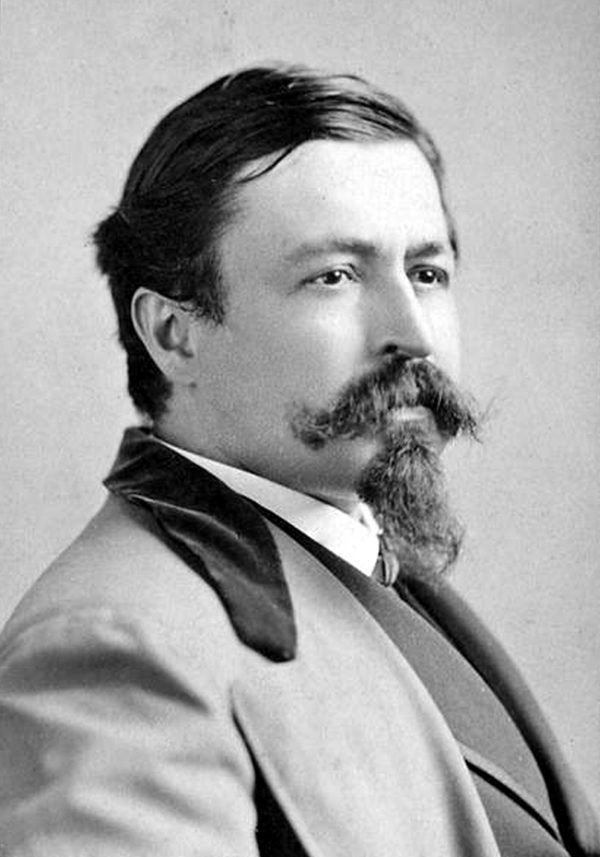
Cartoonist Thomas Nast, who oversaw Santa’s proportional expansion from “jolly old elf” to larger-than-life.
Nast portrayed Santa Claus many times throughout his career, and oversaw the expansion of his proportions. Although he began with a diminutive figure, by the time he ended, Santa was life-size, perhaps even larger than life, and in jocund demeanor and bewhiskered, portly dimension he closely resembled the wealthy “robber baron” industrialists of his day. Nast also gave us the trademark red and white suit (though initially this resembled more of a “footie” pajama than the belted two-piece we are familiar with), and established Santa’s residence as the North Pole, from where he used an enchanted spy-glass to compile his “naughty or nice” list. Nast’s annual Christmas renderings of Santa’s world in Harper’s Weekly magazine were eagerly anticipated by Americans, and provided an artistic template and jumping-off point for future artists and story-tellers.
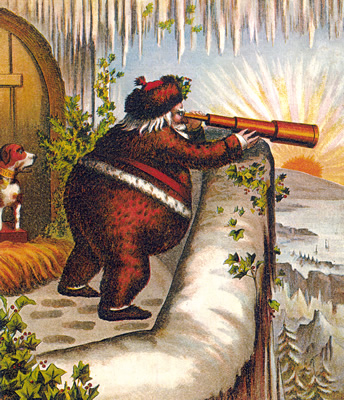
Nast expanded more than Santa’s waistline – the North Pole workshop, the Naughty and Nice list, and the spyglass he used to determine which children were good, were all Nast inventions.
Asteroid Santa in Nast’s (born 27 September 1840) nativity appears at 26 Pisces retrograde, from where it broadly opposes his Sun/Mercury (identity/illustration, drawing) pairing at 4 and 5 Libra. Santa is also inconjunct natal Venus (creative expression, painting) at 22 Libra and semisquare natal Neptune (fantasy, the arts) at 12 Aquarius retrograde.
It soon became apparent that such a vigorously active character required a help-meet to assist his labors, and Mrs. Santa Claus was born. Her creator, Katherine Lee Bates, is best remembered for penning the words to “America the Beautiful,” but her contribution to the lore of Santa is considerable. Her 1889 poem, “Goody Santa Claus on a Sleigh Ride,” is a remarkably feminist work (despite the reversion to the antiquated, Puritanical honorific “Goody”, an early version of “Mrs”), with Mrs. Claus cajoling Santa into allowing her a share of the glory in the task she has worked so hard to bring to fruition. According to Bates, Mrs. Claus is responsible for tending to the numerous magical fir trees surrounding their home which produce the “toys and trinkets” which Santa disburses (she also usurps a few other holiday traditions, in tending the flocks of Thanksgiving turkeys and the “rainbow chickens” which lay Easter eggs). Although later writers modified “Goody” Claus’ feminist leanings considerably, the idea of a mate for Santa became an enduring part of his legend.
Katherine Lee Bates’ (born 12 August 1859) nativity shows asteroid Santa prominently displayed at 19 Capricorn retrograde, exactly inconjunct the Sun (self-identity/creation) at 19 Leo, also inconjunct Saturn (husband) at 16 Leo, opposed Jupiter (publishing) at 14 Cancer, trine Mercury (writing/storytelling) at 12 Virgo, and sextile both Juno and Hera, Roman and Greek goddesses of marriage and spouses, at 14 Scorpio and 21 Pisces respectively.
Artist and illustrator Haddon Sundblom set the final seal on the iconic Santa we know today. Beginning in 1931, Sundblom devised an aggressive ad campaign for Coca-Cola, featuring Santa as “the hardest working person on the planet,” relaxing and rejuvenating himself with a refreshing Coke after his annual gift-giving debauch. Sundblom’s exuberant Santa standardized the red and white suit, giving it a broad black belt and a bright gold buckle, and affirmed Santa’s essential, avuncular joviality by expanding his waistline still further and adding an engaging twinkle in his eyes, set in a ruddy-complexioned face. The image was complete.
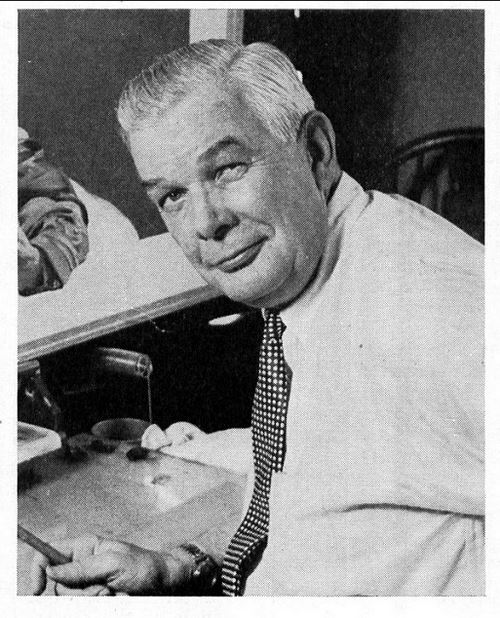
Haddon Sundblom, illustrator for Coca Cola, who standardized the red-and-white suit and gave us the concept of Santa as the “hardest working man on the planet.”
Sundblom’s (born 22 June 1899) nativity reflects asteroid Santa at 14 Aries in square to Mercury (illustration) at 10 Cancer, quintile Neptune (advertising, artistic expression) at 24 Gemini, and trine Saturn (career, corporate interests) at 19 Sagittarius.
Several actors who have famously portrayed Santa Claus also show strong placements of asteroid Santa in their birth charts. Edmund Gwenn is perhaps the best known of these, with his enchanting depiction of a doubtful Santa, concerned with his fading presence in the world, in 1947’s “Miracle on 34th Street.” The self-styled Kris Kringle accidentally lands a job as Macy’s store Santa, and when he insists on the veracity of his identity, is forced to defend himself in court to prevent incarceration in a home for the mentally ill.
The film’s producer, 20th Century Fox, had no idea what to do with the quirky property, which premiered in June – hardly prime time for holiday-themed films – because movie audiences were larger in the summer. The studio downplayed the Santa element in their advertising, but the film was such a smash hit that it ran right through Christmas. Gwenn won a Best Supporting Actor Oscar for his performance the following March, commenting in his acceptance speech, “Now I know there’s a Santa Claus!”
In his nativity, Gwenn (born 26 September 1877) sports a natal asteroid Santa at 10 Libra, conjunct both the Sun and Mercury at 3 and 4 Libra, exactly semisextile Venus at 13 Scorpio, semisquare Uranus at 27 Leo, and forming the Apex of a Yod, or Finger of Destiny, with inconjunct aspects to Neptune at 7 Taurus and a Mars/Saturn combination at 8 and 15 Pisces retrograde. The Yod shows the pivotal, fated importance of the Kris Kringle (asteroid Santa) role to Gwenn’s career (Saturn); the Academy Award (rewards and accolades also Saturn) was the high water mark of his life as an actor (Neptune), and provided an impetus (Mars) to its final stage. When Gwenn won the award on 20 March 1948, transit asteroid Santa at 8 Pisces was exactly conjunct natal Mars, granting him support in the competition (Mars), while sextile natal Neptune and trine natal Venus, establishing and acknowledging his acting ability and artistry.
More recently, actor Tim Allen has established himself as the modern Santa Claus par excellence. In 1994’s “The Santa Clause,” and in two subsequent films, Allen portrays Scott Calvin, a divorced ad-man flailing for direction in his life, until a Christmas Eve mishap with Santa falling from his roof grants him the role of a lifetime. Allen’s conversion from reasonably buff, smooth-shaven 40-something dad into the bearded, roly-poly, white-haired Santa in a span of a few weeks is a comic delight, and the writers inventively re-work much of the traditional Santa iconography and plot elements into a charming confection suitable for its modern setting. “The Santa Clause” was Allen’s first starring movie role, and accelerated his transition from TV (“Home Improvement”) to feature films (“The Santa Clause” was followed a year later by Allen’s voicing of lead character Buzz Lightyear in Disney’s blockbuster “Toy Story”), a pivotal moment in his career development.
In Allen’s (born 13 June 1953) nativity , asteroid Santa at 17 Aries is involved in a dramatic T-Square, exactly squared natal Uranus at 17 Cancer, also squared Mercury at 13 Cancer, and opposed a Saturn/Neptune conjunction at 20 and 21 Libra retrograde. Again we see the themes of storytelling (Mercury) and exotic, alien characters (Uranus), combined here with a clear reference to the importance of the Santa role in achieving the fruition (opposition) of his dreams (Neptune) for a full-fledged acting (also Neptune) career (Saturn). For it is Santa which transforms the major square between Mercury/Uranus and Saturn/Neptune into a T-Square, and provides the release point for that tension: the film career (Neptune/Saturn) achieves its greatest potential (the Full Phase of the opposition aspect) when interacting with a unique, updated story (Uranus/Mercury), and the vehicle for combining these in perfect proportion is Santa Claus.
Finally, Mickey Rooney’s chart can be considered. Although Rooney never portrayed Santa on screen, he did voice him in four animated Christmas specials, beginning with “Santa Claus Is Comin’ to Town” in 1970, and concluding with “The Miser Brothers Christmas” in 2008, becoming the pop culture voice of Santa for almost forty years, granting Rooney’s career a rebirth among a new generation which had never known his early film work.

Rooney’s youthful Santa pores over the Naughty and Nice list, in 1970’s “Santa Claus Is Comin’ to Town.”
Born 23 September 1923, Rooney’s natal Santa at 13 Leo pairs with Neptune (films, animation), at 12 Leo, in semisquare to the natal Sun at 0 Libra and sextile natal Mercury (the voice) at 11 Libra. Incidentally, Mickey Rooney was his stage name; Rooney was born Joseph Yule, Jr, and asteroid Yule at 8 Leo exactly opposes the natal Moon at 8 Aquarius, an indicator both of Rooney’s later affinity with the Christmas genre, and his ancestral heritage and family inheritance, in his surname.
Of course, we’ve thus far ignored that other Christmas icon, Santa’s sidekick, Rudolph. But fear not! There’s also an asteroid Rudolf, and we’ll explore his story next time…
